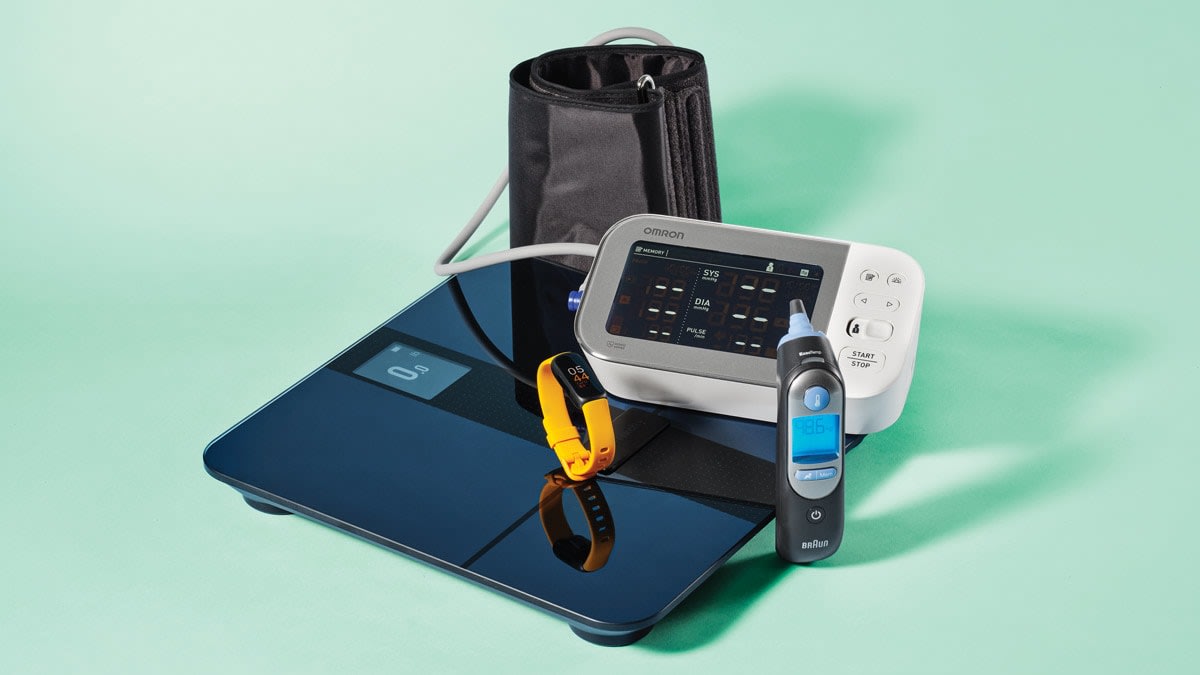
Want more health-tracking options in your toolbox? Here are a few others you might find helpful.
Online Hearing Test
This can be useful for anyone who wants to get a general sense of their hearing ability, says Catherine Palmer, PhD, director of audiology at the University of Pittsburgh Medical Center. You can take one such test in an app from the World Health Organization; search for hearWHO in your app store. (Read more about home hearing tests.)
Dynamometer
This handheld tool lets you do a grip-strength test, a good gauge of overall muscle strength for adults over 65. A healthy minimum squeeze in older adults is about 73 pounds for men, and 44 for women. If yours is below that, ask your doctor about a strength training plan or physical therapy.
Blood Glucose Monitor
Using a drop of blood, this device can check your blood sugar level. Glucose monitors are essential for people who use insulin, and very helpful for tracking how those with diabetes and prediabetes respond to certain foods. They’ve also been marketed to people without diabetes, but no research shows that they’re beneficial for this group, says Steven Furr, MD, president of the American Academy of Family Physicians.
Cardio Machine
Anyone who wants to track their fitness level during their workout may find a treadmill or an exercise bike useful. These can typically determine your heart rate during a workout, an important metric of your overall physical health. Ideally, use a machine with a chest strap heart rate monitor (see two such machines below), rather than handgrip sensors, which tend to be less accurate.
“Over time, as you become more fit, your heart rate should begin to gradually decrease,” says Cedric Bryant, PhD, at the American Council on Exercise. Pay attention to how easily you can breathe while exercising; any increase in your shortness of breath without an increase in your usual intensity warrants a call to the doctor. Any chest pain could signal it’s time for a heart workup.









